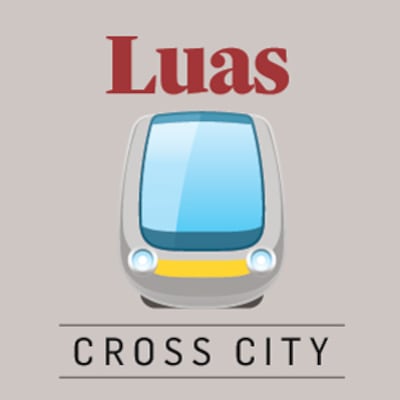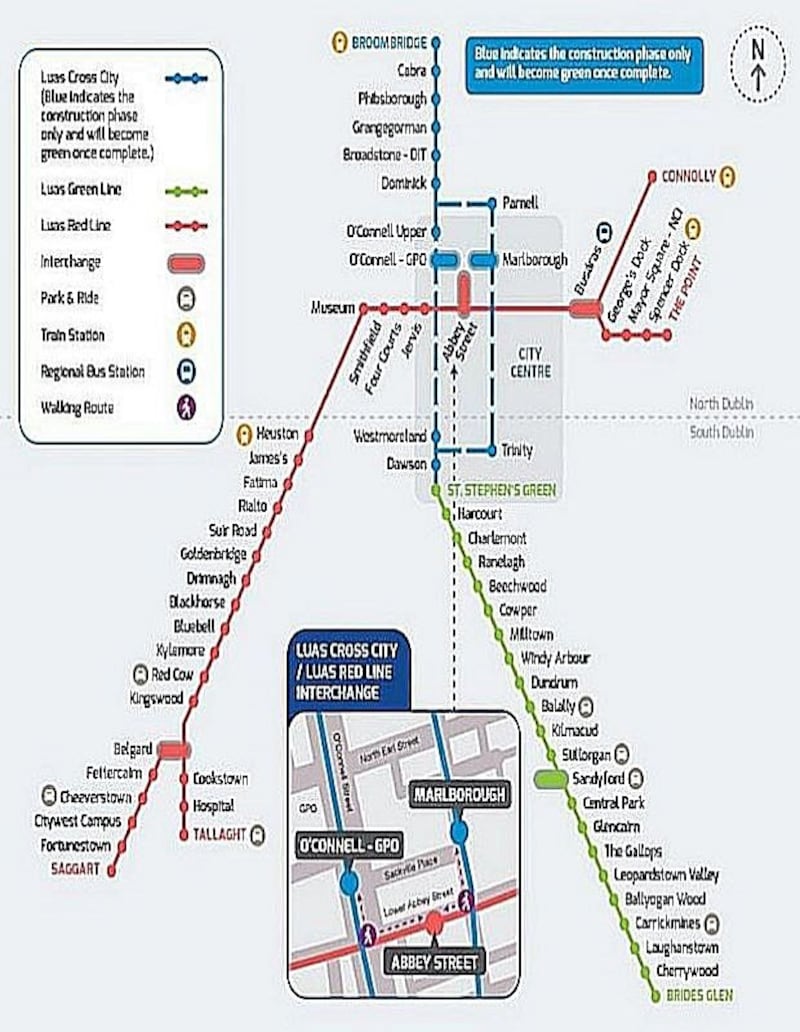"It makes people think differently. It's going to network the city in a way that artists love," says Dublin City Council's arts officer Ray Yeates when asked what effect the new Luas line will have on the capital's cultural landscape.

The question might seem abstract compared to the nitty-gritty issues of traffic gridlock, property prices and commuting times. But interventions of this scale in the city landscape inevitably have a cultural impact – often an unpredictable one.
The entire Luas project forms part of a long-term counter-revolution against the car-focused vision of past generations of planners, politicians and developers. It’s a logical consequence of the “new urbanism” which seeks to remake the city centre as a different kind of space from what it became in the second half of the 20th century.
Culture forms a central part of that idea of a highly networked, creative city with a human scale. “If you think about it, architecture, food, creativity. . . they’re all going to merge,” says Yeates. “You won’t be able to tell the difference.”
There are more practical and immediate implications too, of course – not least the fact that the country's two most prominent theatres are located on the new line. Both the Abbey and the Gate are waiting to see if there's a tangible uplift once Luas opens, but it's certainly much easier now for residents of Ranelagh, Dundrum and Sandyford – who already had the Gaiety – to get along to Let The Right One In or The Red Shoes this Christmas.
“We’re delighted to be at the cross section of the Luas,” says a spokeswoman for the Abbey. “It makes it easier for people to get to their national theatre – that can only be a good thing.”
Audio interference
Although there were some complaints after the Red Line opened in 2004 about noise from the trams being audible in the Abbey auditorium, the spokeswoman insists that it was “a great addition” to the area, with very little noise disruption.
Like everything else in life these days, the new line comes with its own Spotify playlist. There's no Tracks of My Tears but highlights range from Jimi Hendrix's Crosstown Traffic to Lou Reed's Walk on the Wild Side. The lyrics of the former may resonate with frustrated motorists on the gridlocked quays, while the latter might speak to nervous southsiders seeking Korean kimchi on Parnell Street.
The age-old cliche of the Liffey as the city’s ultimate class divide is over-simplistic, but there’s no denying the contrast as you travel along the new extension between the chi-chi restaurants and designer outlets of Dawson Street and the bargain shops and shuttered storefronts of Marlborough Street.
Because the old Green Line terminated at St Stephen’s Green it was essentially a suburban commuter service with a few hundred metres of on-street presence. The Red Line, traversing the northern urban core from the East Link to Heuston, had a greater impact on the city’s fabric, but it remained for the most part tucked away from the busiest parts of town. The new extension runs trams down the city’s busiest streets and – for good or ill – will change the way we think about the city and how we move around it
The line connects Dublin’s three great 18th-century public spaces – St Stephen’s Green, College Green and Parnell Square – passing the front doors of the country’s two leading theatres along the way. Transformation of two of those spaces is imminent. If the city planners have their way, College Green will become a pedestrianised public plaza, while design work has begun for the transformation of Parnell Square into “Dublin’s Cultural Quarter”, centred on an impressive new Central Library on the square’s north side.

It is surely only a matter of time before the maternity hospital at the Rotunda relocates to a more modern facility in a new location, opening up the possibility of reimagining the entire square and its relationship with O’Connell Street.
Tool of renewal
Luas also offers a potential springboard for the renewal of some of the bleakest streetscapes in the city centre. On the north side, Marlborough Street in particular is a hotchpotch of the stolidly monumental (the Abbey, the Pro-Cathedral, the Department of Education) and the quasi-derelict (most of what’s in between). The block backing on to the vacant Clery’s department store is particularly grim, although a new traditional music pub, which opened on the street this summer, may be the first sign of uplift.
Across the Rosie Hackett Bridge on Hawkins Street, the closed-down Screen Cinema and surrounding desolate office blocks await demolition, but how much better will their replacements be? Developers plan an “office quarter”, along with shops, restaurants, a public plaza, and a new diagonal pedestrian street. It’s one of the city centre’s largest redevelopment projects, but it’s far from clear whether the finished development will respect the street’s long tradition of popular entertainment by including a cinema or live performance venue.
Ray Yeates says that, while there will be a requirement for some sort of cultural component on Hawkins Street, this is subject to negotiation, and it will be a very different type of discussion than has happened over Parnell Square, where culture is the driver of the overall project. “It’s always a complex discussion,” he says. “There are competing values – the right to private property, the right to put up whatever signs you want. Culture can mean anything from community hubs to workspaces to venues. But people don’t always see the value of that compared to, say, a park.”
He believes one positive result of the new line will be the opening up of what has been an relatively invisible part of the city centre, from Dominick Street to Bolton Street and beyond towards Broadstone and Grangegorman. “It will deepen appreciation of those neighbourhoods,” he says.
And he has one simple suggestion for how the Luas could transform Dublin’s cultural life: “If it ran all night, it would revolutionise the arts as people could gig and get home cheaply.”














